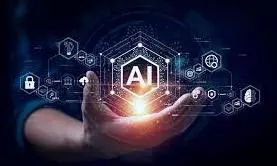Skilled, Not Educated: How AI tools are linking semi-skilled women through vernacular interfaces and video-based assessments
In the corporate world, the increasing challenges of gender inequality in AI, the low female representation has made it difficult for those women who are in search of mentors to break the glass ceiling

Much has been said about loss of jobs through Artificial Intelligence (AI) while completely ignoring the fact that AI can actually be an enabler to empower low-skilled and semi-skilled women stagnated in a corporate setup into a higher pedestal. And if we expand the landscape and include women in rural India, especially those who have retreated inside their homes during and after the COVID-19 pandemic, the opportunity is enormous and can change the face of women empowerment.
In the corporate world, the increasing challenges of gender inequality in AI, the low female representation has made it difficult for those women who are in search of mentors to break the glass ceiling. Looking beyond the segments of engineering or programme development, AI is now being widely used in marketing, media, content, healthcare, consultation and finance. Women without AI skills are facing stagnation. But thankfully firms focussing on enhancing AI skills of working women are coming up with tailor-made courses designed for specific industry and segment-related roles. A lot of multinational companies are looking at these firms to upskill their existing women workforce as well.
A big component of the fourth industrial revolution are the automated factories sans workers or factory managers. Manufacturing will be a 24X7 job in ‘dark factories’. We have already seen a few examples of those in China where Foxconn and BYD have been using robotics systems to run the factories. AI-based Machine Learning is an essential part of process and data labelling, bounding box annotation or image annotation are essential to set up the algorithms which are the building blocks of such Machine Learning tools. Many AI data annotation companies in the emerging markets are hiring undergraduates and unskilled people and training them for getting acclimated to the annotation jobs. Manufacturing outfits are outsourcing these jobs to countries like India, Vietnam where labour is comparatively cheaper.
Beyond the corporate steel and glass building and factories, AI has opened up a new vista of possibilities of upskilling low-skilled women from rural India to handle data entry, data ingest, data labelling jobs. Training courses can be designed using Generative AI, which creates video-cum-text or video-cum-audio content making it easier for those without much formal education to imbibe it.
Once trained these women can also act as frontline workers in government jobs to collect information at the ground level, which are vital for surveys like the national health missions or Integrated Child Development Services as well as National Sample Survey and the general census.
The algorithms which form the bedrock of AI tools need a huge quantity of data sets. Low skilled or semi-skilled workers can be trained in an audio-visual format with local languages being the medium of instruction. Such a workforce can be used for the mammoth task of carrying out surveys collecting data on health, labour, family and women in the remotest parts of India where it becomes a challenging task without being able to converse in the local dialect. With the help of an App designed to record the responses based on an audio- formatted set questionnaire the data can be gleaned using a Natural Language Processing- based data analysis tool. The training would set the stage for these women to join as ASHA and Anganwadi workers.
The same goes for the AI-based language models that the foremost tech companies and the governments the world over including India are involved in. The Large Language Models (LLMs) are in the developmental phase and promise to be a gamechanger in the ways our education system functions. The current AI-based models are all translations from English with a foreign accent even in local languages making it difficult for the uninitiated to understand. A huge section of the rural population, particularly women and children, can benefit from such AI-driven language models. Imagine, an education system imparted in audio-visual mode through the local language and dialect has the possibility of addressing the lack of a proper education system in remote areas. Such a system would likely provide a solution to a plethora of issues starting from lack of funding to inadequate infrastructure for a formal schooling system. To an extent it can even address the absence of teachers.
To establish such LLMs like the government-funded BharatGen, , the basic data collation on various languages and its dialects would need workers at the ground level who understand the localised vernaculars and low-skilled women can play a pivotal role. Such large LLMs, when ready, would democratise AI and provide access for citizens especially those living on the margins. From accessing healthcare facilities to answering queries on government schemes to availing social schemes an AI-run audio-formatted model can be handled by semi-skilled workers trained in an AI Generative audio-based mode.
So, from being a job gobbler AI can upskill workers. The only need is to get proper training in a suitably-designed course.
This article is authored by Vikas Sagar, Kalido Co-Founder and SAWiT Champion.

